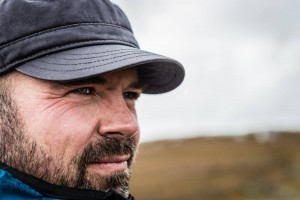by kalle | Aug 27, 2004 | Xbox
So I wanted to have a newer version of the bios on my modchip. I found this guide that explains how to do it.
A newer version of the Cromwell BIOS were available though. As well as a newer X2 BIOS Manager
Finally this guide explains how to upgrade your X2 with Cromwell.
by kalle | Jul 22, 2004 | Computer Games
Daniel tipsade samtidigt om en annan kool sak, GamePark32 Hemsidna är dock på Koreanska så det är lite svårt att läsa sig till vad den kan. Dock ger Xtreme Gp32 Faq mycket mer information. Även från återförsäljaren GBAX.com kan man få mer information.
by kalle | Jul 22, 2004 | Computer Games
Daniel tipsade precis om ScummVM. Det är en virtuell maskin som man kan köra gamla klassiker som Monkey Island mm från Lucas Arts. Finns visst för PocketPC, vore ju grymt sjysst att ha på resan, en PocketPC med Monkey Island!
by kalle | Jul 10, 2004 | Foto
Some time ago I read this article on digital IR photography. It awakend an old interest of mine. Several years ago I bought some IR films because I wanted to try it out but it was hard to find any filters here in Sweden at that time. So it never happend. But inspiered by the article I started to look around again.
more>
Earlier this week I called ScandinavianPhoto shop here in Gothenburg. It turned out that one of the salesman had just started to look for a supplier of IR filters, what a coincidence! So I called them today again and he hadn’t been that lucky, but recommended me to look at darkred Hoya filters. According to his contacts those should work. So I did some googling.
The “Infrared basics for digital photographers”-article is quite long but explains well how digital IR photography work.
Marco Pauck has some notes on his personal experiences with Infrared Photography. As well on the use of digital cameras for IR photography.
Bjørn Rørslett has several pages on IR Colour Photography. Have not read them all yet but looks interesting.
The camera I’m planning to use is my Canon Powershot A70 and I did the TV remote test it seems to be quite sensitive to IR as you can see in this image.
So reading these articles clearly indicate that the way to start is to get a Hoya R72 filter. And I discovered that CyberPhoto has the Hoya R72 filter and also ScandinavianPhoto said when I talked to them they could order any Hoya filter for me, so the task for tomorrow is to order one.
by kalle | Jul 7, 2004 | Hardware projects
I’m quite interested in experimental photography and the interest has increased since I got my digital camera last year. One thing I really like is that it’s so easy to take images in dark situations. Though one problem is that I do not have a remote control for the camera so some images gets blurry due to motion. Canon does not have a remote control either so what to do? Build one yourself of course! It can not be that hard since you can take images with the camera from the computer once you have connected it, but I dont want to bring a PC every time. So I started looking on the net to see if someone else had done this already. I could not find any.
Though I found this document: Canon PowerShot Series Transfer Protocol Specifications Friday, August 8, 2003 which will most likely be really useful. The next problem is to find a really small and cheap CPU, like the PICs from MicroChip, nut that can be a USB host. Any tips are most welcome..
This project has just started….
by kalle | Jun 24, 2004 | Software
Jimm – Mobile Messaging is a ICQ client intended to run on mobile phones. Tried it and it works really well. COOL! Only problem is that I would like to minimize the application so I can use the phone as normally.
by kalle | Jun 20, 2004 | Hardware projects
Have bben working with a Plam application that read data from a device connected on the serial port. Had some problems with it. To see what actually was received I needed some tools and I found these;
RealTerm from SourceForge. Its specifically developed for debugging serial communication!
HCalc was also convinient to have when calculating CRCs.
The RealTerm people are working on another project I should check out when I got time. A PIC programmer, called PP06.
by kalle | Jun 7, 2004 | Software development
Stumbled into this UNIX guide which seems to include a lot of useful information. Probably good to keep it, that why I blogged it 🙂
by kalle | Jun 7, 2004 | Online Games
TSO – Teamspeak Overlay är ett intressant tillägg till TeamSpeak som gör att man kan se vem som pratar, bra att ha när man spelar med folk man inte känner helt och hållet. Måste testas.
by kalle | Jun 6, 2004 | Software development
I have been working on a Palm application for somw days now. Its a tool to log data from a device connected to the serial port of the Palm. The data is stored in a file on the memory card. The first version will just support one specific device, the 3DM-G tilt and motion sensor from Microstrain Inc.
I stumbled into some weird problems. All worked just dine in the Palm Simulator on the PC but once I moved it to the Palm T3 I use the T3 crashed after each hotsync. This answers why: Re: HotSync Fatal Exception
